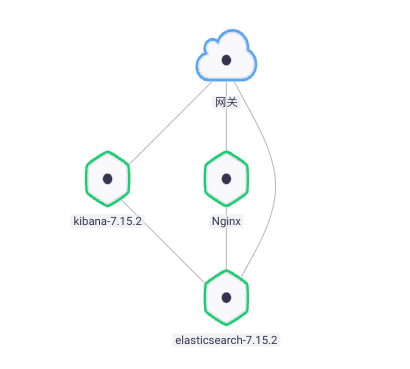当前位置:网站首页>Fiber Bragg grating (FBG) notes [1]: waveguide structure and Bragg wavelength derivation
Fiber Bragg grating (FBG) notes [1]: waveguide structure and Bragg wavelength derivation
2022-07-01 05:26:00 【subtitle_】
introduction
This paper is about fiber Bragg grating (FBG) The notes 【1】, The waveguide structure of fiber Bragg grating is introduced , The expression of fiber Bragg wavelength is derived by using the conservation of momentum and energy
The most simple uniform fiber Bragg grating in ordinary fiber is that the refractive index changes periodically (FBG), The waveguide structure is shown in the figure below .
The description of its sensing principle can be divided into the following three points :
① The light propagating in the fiber core will be reflected and transmitted on each grating surface ;
② If Prague condition is not satisfied , The light reflected by the orderly arranged grating planes will gradually become different until they finally cancel each other ; At the same time, because the coefficients do not match , The reflection of light that does not match the Bragg wavelength in each grating plane is also very weak , Most of the light is transmitted in the optical fiber .
③ If Prague conditions are met , The light reflected from each grating plane is gradually accumulated , Finally, it will form a Reflection peak , The central wavelength is determined by the grating parameters .
We focus on the light that meets the Bragg condition , Temperature can be achieved by monitoring Bragg wavelength 、 Strain sensing . Using the conservation of momentum and energy, we can deduce the expression of Bragg wavelength :
Conservation of energy : h ν r = h ν i h\nu_r=h\nu_i hνr=hνi
This requires the frequency of incident light ν i \nu_i νi And reflected light ν r \nu_r νr frequency ( Light satisfying Bragg condition ) identical .
Conservation of momentum : P i + P = P f \mathbf{P}_i+\mathbf{P}=\mathbf{P}_f Pi+P=Pf
This requires the incident wave vector P i \mathbf{P}_i Pi And grating wave vector P \mathbf{P} P The sum is equal to the reflected wave vector P f \mathbf{P}_f Pf. Because the momentum is h λ \frac{h}{\lambda} λh, The wavelength of incident light and reflected light is the same ( Light satisfying Bragg condition ), So the reflected wave vector P f \mathbf{P}_f Pf And the incident wave vector P i \mathbf{P}_i Pi Equal in size and opposite in direction , The amplitude of the wave vector of the grating is 2 π Λ \frac{2\pi}{\Lambda} Λ2π, So the momentum conservation condition can be rewritten as :
2 π n e f f λ B − 2 π Λ = − 2 π n e f f λ B \frac{2\pi n_{eff}}{\lambda_B}-\frac{2\pi}{\Lambda}=-\frac{2\pi n_{eff}}{\lambda_B} λB2πneff−Λ2π=−λB2πneff
That is to say :
2 ( 2 π n e f f λ B ) = 2 π Λ 2(\frac{2\pi n_{eff}}{\lambda_B})=\frac{2\pi}{\Lambda} 2(λB2πneff)=Λ2π
Finally, the Bragg wavelength is obtained λ B \lambda_B λB The expression of :
λ B = 2 n e f f Λ \lambda_B=2n_{eff}\Lambda λB=2neffΛ
In style , Fiber Bragg grating λ B \lambda_B λB Is the central wavelength of the incident light reflected from the fiber Bragg grating in free space ; n e f f n_{eff} neff Is the refractive index of the fiber core for the central wavelength of free space .
reference :
[1] Rao Yunjiang Wang Yiping . Principle and application of fiber Bragg grating [M]. Beijing : Science Press ,2006:136-137.
边栏推荐
- Actual combat: gateway api-2022.2.13
- Leetcode1497- check whether array pairs can be divided by K - array - hash table - count
- Actual combat: basic use of Redux
- 0xc000007b应用程序无法正常启动解决方案(亲测有效)
- Solution: thread 1:[< *> setvalue:forundefined key]: this class is not key value coding compliant for the key*
- QT等待框制作
- [data recovery in North Asia] a data recovery case of raid crash caused by hard disk drop during data synchronization of hot spare disk of RAID5 disk array
- 提高企业产品交付效率系列(1)—— 企业应用一键安装和升级
- Fluentd is easy to use. Combined with the rainbow plug-in market, log collection is faster
- Flowable source code comment (XXXIX) task listener
猜你喜欢

Thread process foundation of JUC

Tcp/ip explanation (version 2) notes / 3 link layer / 3.2 Ethernet and IEEE 802 lan/man standards

LRU cache for leveldb source code analysis

Use and principle of Park unpark

Memtable for leveldb source code analysis

Things generated by busybox

Fluentd is easy to use. Combined with the rainbow plug-in market, log collection is faster

Actual combat: basic use of Redux

LevelDB源码分析之LRU Cache

第05天-文件操作函数
随机推荐
[data recovery in North Asia] a data recovery case of raid crash caused by hard disk drop during data synchronization of hot spare disk of RAID5 disk array
实战:redux的基本使用
Rust基础入门之变量绑定与解构
Txncoordsender of cockroachdb distributed transaction source code analysis
移动端常用解决方案
Set集合详细讲解
Thread safety issues
AcWing 885. Find the combination number I (recursive preprocessing)
Daily question -leetcode1175- permutation of prime numbers - Mathematics
Software intelligence: the "world" and "boundary" of AI sentient beings in AAAs system
[RootersCTF2019]babyWeb
Flutter can refresh data every time the interface comes in
Global and Chinese markets for business weather forecasting 2022-2028: Research Report on technology, participants, trends, market size and share
C WPF uses dockpanel to realize screenshot box
云原生存储解决方案Rook-Ceph与Rainbond结合的实践
More than one file was found with OS independent path ‘lib/armeabi-v7a/libyuv.so‘.
printk 调试总结
Thread process foundation of JUC
Redis数据库的部署及常用命令
数字金额加逗号;js给数字加三位一逗号间隔的两种方法;js数据格式化